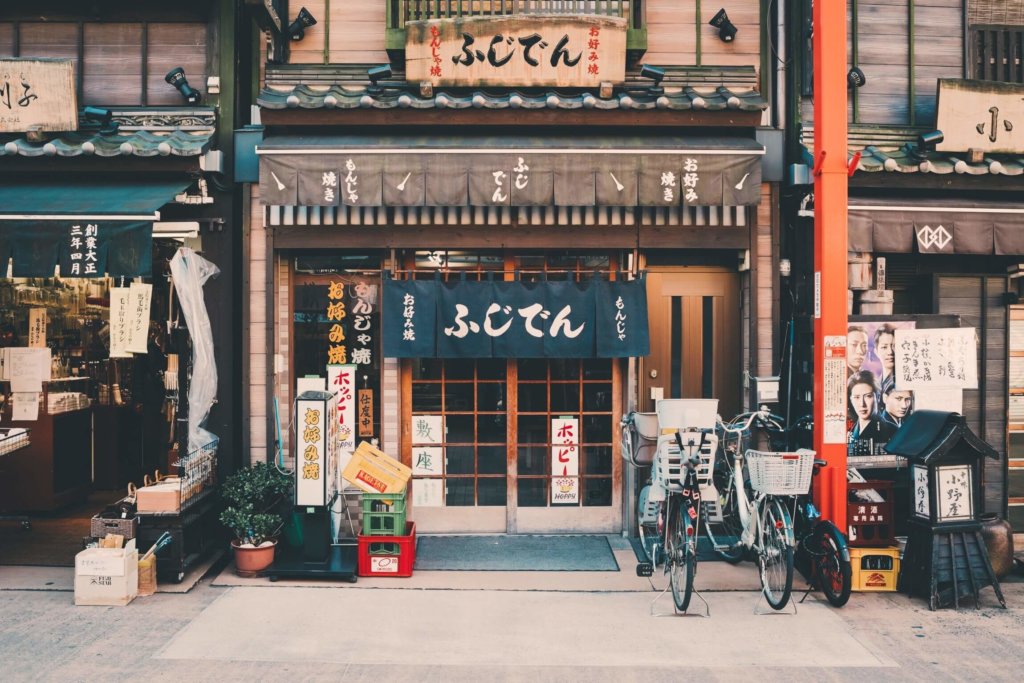Japan is known for its plethora of mature businesses, with an estimated 50,000 businesses over a century old. Of these, many are successful family businesses that have stood the test of time. Family firms interwoven with the local culture have succeeded in creating quality products that represent the Japanese identity, and the tradition and attention to detail behind their creations is attracting an increasing number of international consumers.
We have compiled a list of the four oldest Japanese businesses that are still owned and operated by the original family. Two of these family businesses have been operating for 200 years or more.
4. Takenaka
Founded: 1610
Employees: 7,500
Takenaka is an international construction and engineering firm with a rich history. Considered to be one of the oldest of its kind in the world, Takenaka has been at the forefront of its trade for centuries. In 1610, the company was founded by Tobei Masataka Takenaka, who was charged with construction by the Oda family of Nobunaga Oda fame.
The company initially gained notoriety for its construction of temples and shrines. Gradually, they diversified their projects in both scale and materials. Shortly before they relocated headquarters to Osaka in 1923, the company built the first reinforced concrete building in Japan for famous department store chain Takashimaya.
Takenaka would go on to be awarded the contract for the construction of Tokyo Tower, once the tallest tower in the world. Modelled after the Eiffel Tower of Paris, Takenaka’s Tokyo Tower is one of the city’s most iconic landmarks.
The company has continued its excellence in engineering and constructing landmarks. For example, Takenaka is responsible for the majority of Japan’s dome stadiums. Now, as one of Japan’s preeminent construction firms, they are looking to diversify their product once again.
The current generation’s head, Toichi Takenaka, wants the company to continue creating sustainable buildings that help to solve the problems of society. To that end, they are at the country’s cutting edge of zero carbon emission buildings.
3. Enshu Sado School
Founded: 1608
Employees: 20
The Enshu Sado School was founded in 1608 by Kobori Enshu, the feudal lord of modern-day Shizuoka prefecture. Enshu had many roles in the Tokugawa shogunate of the time, including but not limited to the official tea instructor of the court. Due to his authority, he altered how “sado,” the traditional Japanese tea ceremony, was conducted forever.
Kobori’s style of simple yet elegant tea ceremonies was, in some ways, a marked departure from his teacher Oribe Furuta. Furuta’s teaching implored the practitioner to appreciate the roughness and imperfection found in nature. Kobori’s genius was marrying both approaches to create “kirei-sabi,” roughly translated as gracefulness and simplicity.
To this day, Kobori’s influence can still be seen in the traditional sado ceremony. The Enshu Sado School carries on his teachings through over 30,000 members across 53 chapters, including international locations in Asia and Europe.
2. Toraya
Founded: 1600
Employees: 928
Founded in 1600 by Enchu Kurokawa, Toraya is a traditional Japanese confectioner. Its auspicious beginnings go all the way back to their role as court purveyor for Emperor Goyozei (1586-1611). Toraya wisely followed the national capital shift to Tokyo, where they established their current base of operations in 1869.
Their product, “wagashi” or “Japanese sweets,” are a beloved cultural staple. They are typically enjoyed during tea time in Japan. The sweetness of the wagashi offsets the bitterness of the matcha tea. Toraya further borrows on Japanese tradition by incorporating nature and the four seasons into their product. The customer can find familiar designs in Toraya’s sweets, such as the iconic cherry blossom and layered snow cakes.
Now in its 17th generation, Mitsuhiro Kurokawa maintains the quality product that many have come to know and love. The Kurokawa family aims to continue their success by retaining their core values and enriching their traditions.
1. Hokuriku Awazu Onsen Hoshi
Founded: 718
Employees: Undisclosed
The Hokuriku Awazu Onsen Hoshi dates back to the year 718 AD, when monk Taicho Daishi founded it. Located in the coastal prefecture of Ishikawa, it is found in the seaside town of Komatsu. According to legend, Daishi was directed by the gods of Hakusan, one of Japan’s three sacred mountains, to establish the onsen at its current location.
One of many Japanese “ryokan,” a traditional inn that serves guests similarly to bed and breakfasts, Hokuriku Awazu Onsen Hoshi has remained successful in part thanks to the strength of the hospitality industry in Japan.
At their ryokan, visitors experience “omotenashi,” a code of conduct that drives their concept of hospitality. Omotenashi represents the desire to wholeheartedly care for guests – that level of attentiveness and care that has sustained Hokuriku Awazu Onsen Hoshi for centuries.
Over the years, the family business has remained under the leadership of 46 successive generations. The current leader, Zengoro Hoshi, continues to sustain the ryokan’s tradition all while catering to the modern tastes of its patrons.
Hoshi knows the business will be in good hands, with his daughter Hisae an active part of its operation. Each generation passes down the mantra “one time, one meeting,” which emphasises their desire to provide the highest quality service as though it may be the last time they see you.

